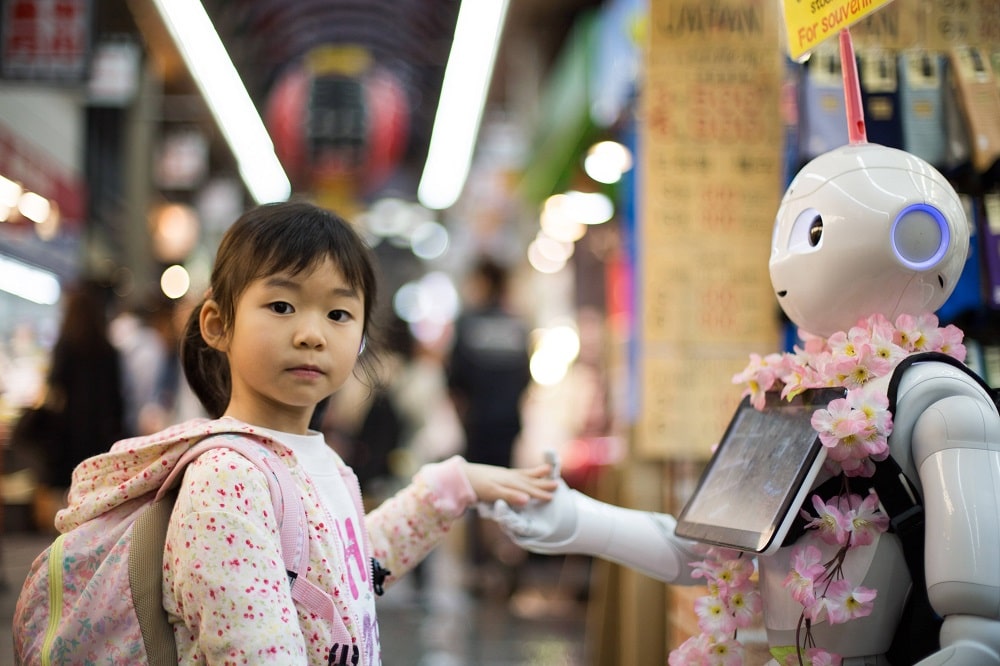
6 Fun Activities for Your ESL Technology Lesson Plan
As teachers, we have to embrace this idea: Never fear the new!
Bringing technology into the classroom doesn’t mean keeping up to date with the latest social media app, but it does mean you need some carefully-crafted technology based lessons.
I know I needed a push to keep my lesson plans and activities up with the times, technologically speaking.
If you need the same push, read this post, where I’ve compiled six fun and effective technology focused activities that can bring new life into your next class.
Contents
- 1. Technology Timeliness
- 2. Product Design
- 3. Strange Products
- 4. Predicting the Future
- 5. Technology Survey
- 6. Drone Stories
Download: This blog post is available as a convenient and portable PDF that you can take anywhere. Click here to get a copy. (Download)
1. Technology Timeliness

This activity will get students talking about vocabulary for smartphones. The best thing about it is that it requires no materials at all. Almost every student will have a phone in their pocket, which can be used as a conversation starter.
As an ice-breaker, ask students if they remember their first mobile phones. They can discuss them with their partner, comparing them to their current phones.
Next, ask them to draw out a timeline, starting from the very first mobile phone to the most modern. This should include the model they have, as well as any others they can remember. They should add notes on the technological advancements between each one. Go over everything from cordless phones to flip phones, phones with physical keyboards, picture messaging, Bluetooth and touchscreens. If your students aren’t old enough to remember some of the older models, give them some help along the way.
In groups or pairs, have them predict what they think a future mobile phone might look like. This should include materials, features and cost. It doesn’t need to be realistic, so they can get creative with it. At the end of the class, each group can present their idea. This will get them to practice their public speaking skills, too.
Got a student without a smartphone, or any phone for that matter? Not a problem. Have them talk about why they chose not to have a smartphone. You may be surprised to hear some of their reasons why, beyond just the cost.
2. Product Design

If your students are interested in design or marketing—and usually quite a few are—this activity is ideal.
To start, introduce the things that designers must think about when creating a new product. This should include ergonomics, aesthetics, safety and lifespan. ThoughtCo has a great lesson plan on creating new products which includes some of these terms.
Then, put students into small groups before asking them to look around the room and choose one product. It could be anything at all, from an electronic device to a piece of furniture or stationery. After they’ve chosen a product, they’ll have to evaluate it based on the qualities listed at the start of the class. Students should ask each other the following questions:
- How long does it last?
- Who is the target customer?
- What is it made from?
- How could it be misused?
- How could it be improved?
For a more basic version of this activity, you could use ISL Collective’s product pitch worksheet.
3. Strange Products

Not every student will find technology interesting. For some, the idea of spending an hour talking about product design, coding or gadgets puts them to sleep. To make it interesting, you can add an element of humor by talking about some of the weird and wonderful products people buy.
To do this, present the strangest products of 2022 to your class either on the projector or on worksheets. Alternatively, you can use Buzzfeed’s list of ridiculous products you can actually buy, which includes a “boyfriend pillow” for singletons, a turntable for cats and underwear for your feet.
Use these products as the basis for a discussion or debate class. Students can talk about whether they like them, how useful they are, if they would buy them and how much they would pay for these products.
4. Predicting the Future

This activity will not only teach technology-related vocabulary, but also enable students to use it to make complex predictions about how it will change in the future.
To kick things off, ask students how they think the world will be different in 10, 50 or 100 years. Encourage them to think from lots of different angles, including transport, food, jobs and relationships. They can brainstorm their ideas on the board or on paper to come back to later.
Then, give out a worksheet with Bill Gates’ seven predictions for 2035. He talks about automation, clean energy, artificial intelligence, mobile banking and even “bioterrorism.” It’s a great reading activity, which features lots of different vocabulary surrounding technology.
Allow your students to read the information, highlighting any words they don’t understand. There are likely to be a lot of them, so you’ll have to spend some time going through definitions as a class. Once your students have a grasp of each of the seven predictions, they can use them as a basis for discussion. Ask students to talk in pairs about whether they agree or disagree with each prediction and why.
Once they’ve done that, teach them some grammar for how to talk about the future. Specifically, modal verbs like:
- Will
- May
- Can
- Might
” If your class is more advanced, you can also include words like:
- Perhaps
- Definitely
- Probably
- Possibly
Students can learn how to use these words to talk about degrees of certainty. TEFLTastic has a wide range of worksheets for this.
If students struggle for ideas, you can use ISL Collective’s future predictions worksheet, which has 26 examples already written out. If you want to make it even more advanced, you can use this class to teach future perfect tense, asking students to make sentences like these:
- By 2050, scientists will have found a cure for cancer.
- In fifty years’ time, everyone will have bought a flying car.
5. Technology Survey

This activity will teach students how to form questions and will help them to practice fluency. It doesn’t require any complex grammar, making it appropriate for lower level students.
In pairs or groups, ask your students to write ten questions to ask each other about technology. These questions can include devices and apps they use, their opinions about the use of technology or anything else they can think of. Here are some examples:
- How much time do you spend on social media every day?
- Do you think that children should have mobile phones?
- How old were you when you got your first mobile phone?
- Do you prefer to use laptops or tablets?
These questions can be used to conduct a class survey. Students can go around the class and ask their questions, recording answers as they go.
6. Drone Stories

Almost every student thinks drones are cool these days, so I like to use the thousands of hours of drone footage on YouTube to my benefit when thinking up activities.
In this one, you should probably start the activity by showing the students some great drone footage that appeals to you. I recommend using this gorgeous footage above Croatia.
After you’ve watched about five minutes of this footage, ask your students what they think it’s like there in Croatia. A student may have been there, or maybe one wants to go, which can help kick start the conversation.
Then ask students to find their own favorite drone footage clips on their phones. Then have them email the links to you so you can show them on the screen in front of the class.
But before you do this, have students write a short narrative about the place the class will be seeing.
For example: Today, we’re flying above the Sahara Desert in Africa, the largest desert in the world. Here’s a herd of elephants looking for water. The temperature is almost 100 degrees right now and the sun is shining, so not many people are out.
After watching the students’ clips and hearing their narrative, encourage the class to ask questions about the place.
Technology is a great tool for learning English. In these activities, students will practice their skills while building the confidence to be able to talk about it.
They can discuss how they use it, what they like and dislike about it, and how they think it will change in the future. This will help them to build fluency that’s valuable in all conversation, no matter the topic.
Download: This blog post is available as a convenient and portable PDF that you can take anywhere. Click here to get a copy. (Download)


